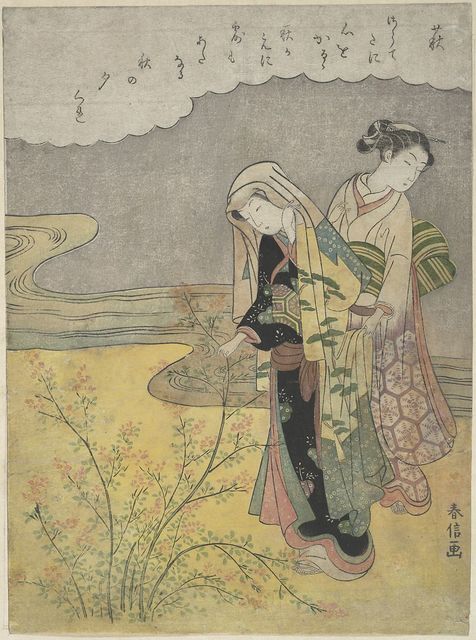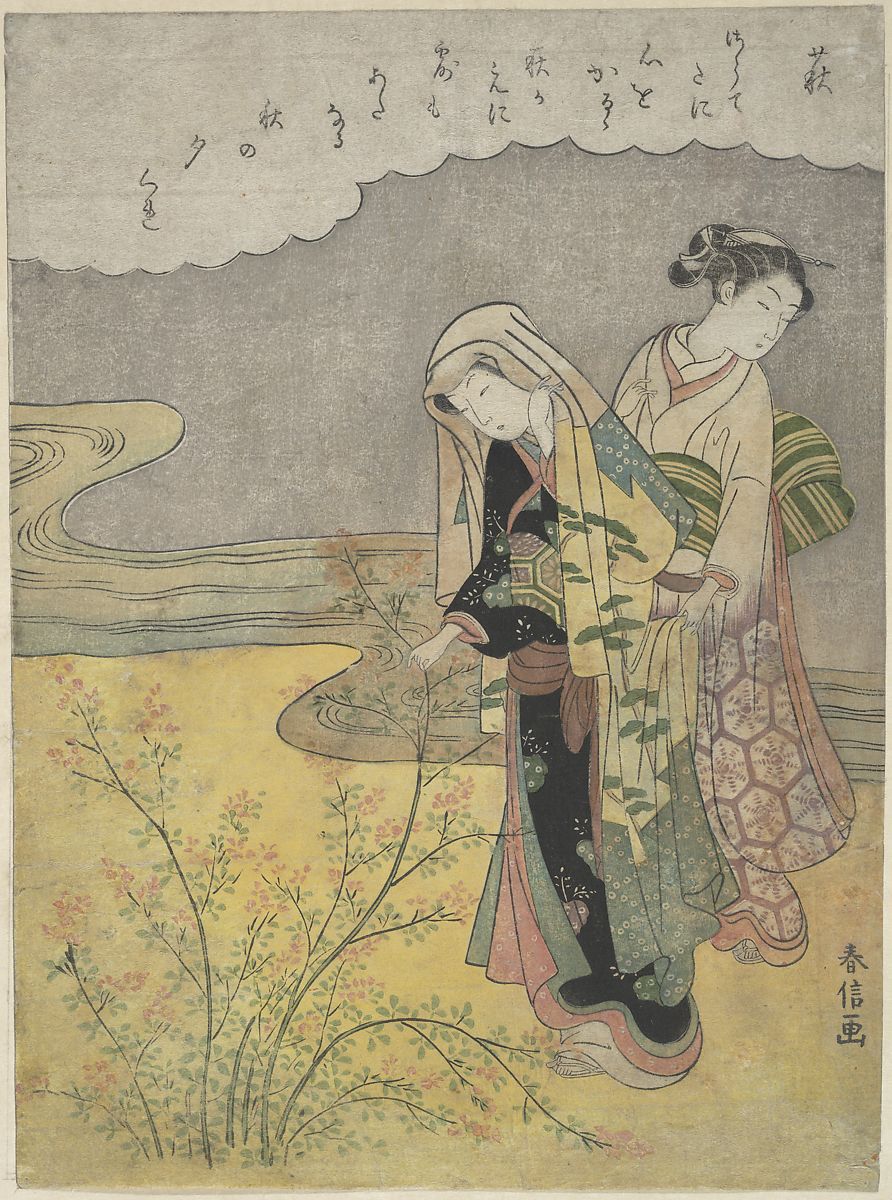Title: The Bush Clover (Hagi) Artist: Suzuki Harunobu (Japanese, 1725–1770) Period: Edo period (1615–1868) Date: ca. 1766 Medium: Woodblock print; ink and color on paper Dimensions: 10 7/8 x 7 7/8 in. (27.6 x 20 cm) medium-size print (chu-ban)

Full description
This woodblock print by Suzuki Harunobu features a young woman with her head held low in a pensive and defeated manner holding on to a Bush Clover branch. The Bush Clover known as (HAGI) in Japan has been historically associated with melancholy and unrequited love. Coincidentally, autumn is when the Bush Clovers blooms and also represents the transition of life (summer) to death ( fall, winter), therefore signifying the scene we see here as the young women's decline in the will to live. The deep distress this young woman feels is heightened with her head and body shielded from the outside world with her outer garment (katsugi). In addition, her attendant shying away from her pain emphasizes the isolation one must feel when driven to commit shinju. Lastly the poem up top which talks about the woman's withered heart solidifies to viewers what is trying to be conveyed.
Poem Translation:
Bush Clover My heart is withered, even dew on the branches of bush clover is futile in the autumn evening.
Comments
to view and add comments.
Annotations
No one has annotated a text with this resource yet.
- typeImage
- created on
- file formatjpeg
- file size236 kB


